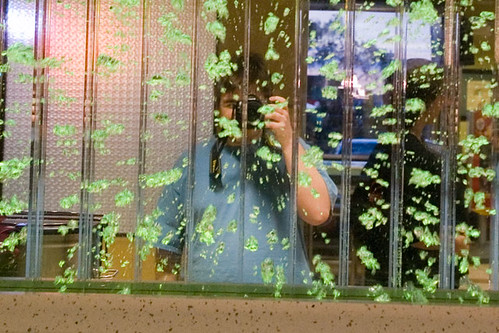This summer, I'm getting three machines that count both as desktop personal computers, and will probably be used as server computers. The first two, and almost the more important two, are the two Hewlett Packard e-PC units I'm getting and will be using. They're Pentium III computers running at about 1.2GHz, and if I remember correctly, mine will have either 256 or 512 megabytes of memory. The second, and almost certainly the more powerful and versatile of the group, is a Sun Ultra60 UNIX workstation. The U ltra60 is to have about a gigabyte of memory, and two 18-gig SCSI hard discs. It's also got a DVD-ROM drive to make installation of Solaris 10 more easy.
On the two HP e-PCs, I intend to install Windows Server 2003. One of them will run IIS and SharePoint services, the other will be the primary domain controller. (I'm inside my own LAN, don't worry!) I'm not exactly sure how all of the services will shake down onto the two machines, but I think it'll go like this:
- Machine 1
- Primary Domain Controller
- Terminal Services.
- Distributed File Services
- Machine 2
- IIS/PHP/MySQL/SharePoint
- Exchange
- Distributed File Services
My intent is to learn even more about networking with Windows Server 2003, which I am getting through Microsoft's DreamSpark program. I'd gladly try out Server 2008, but it looks like that particular piece of software is not yet available through DreamSpark. I'd try it via MSDNAA but CIS120 didn't give me proper MSDNAA access.
My other evil plan is to test Windows Vista, Windows XP, Windows 2000 and Windows NT4 clients to the domain in virtual machines, to see how everything is set up, and how everything works on the different operating systems. I even intend to see how well the two e-PCs might work for hosting the
UeberLandoWiki.
The Sun Ultra60 will be used directly on resnet, for maximum speed and reliability. My intent is to use this machine as a standalone web server, and web development server -- especially if I go ahead with learning some PHP this summer. We're going to put the UeberLandoWiki on the U60 and host it here at NAU. With luck, because I can just dump the U60 in the closet and leave it running, ULW should stay up pretty reliably. We can even point the domain at it's IP in my room.
In another year or two, I may consider moving ULW onto the Windows machines permanently, although for now it'll just be rocking out on Solaris' CoolStak AMP stack. ULW works quite well on the U60, so I don't expect to really need to move it around, although just for good measure, I probably will. Mainly, I want to test it in Windows 2003 on the e-PCs, along with maybe Gentoo or Debian Linux on one of the e-PCs.
I'm trying 10.5 Server out on the iMac pretty soon here, and I'm pretty excited to see how well 10.5 server works. I do wish I had another machine to use as a 10.5 client, but I think we should be fine with just having a 10.4 client to authenticate against it. I'm also pretty excited to see how well ULW will run in a 10.5 server environment, without MAMP. If it all works well, I may consider overlaying my 10.5-client install with 10.5 server, to keep some of the cool server things going.
So that's what I'm
planning this summer, as far as some of my server projects go. Most likely, in a future summer, I'll combine the functions of my web server and my Windows servers into a newer box running Server2003 or Server2008, but that's for later on.



